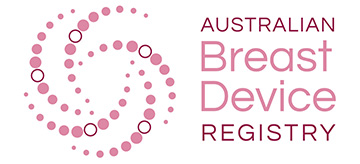ISSUE #12 ABDR NEWSLETTER OUT NOW
March 10, 2020
Welcome to the latest issue of the Australian Breast Device Registry (ABDR) newsletter. In addition to an update on the registry’s progress, we’ve compiled links to recent TGA webinars discussing BIA-ALCL and breast implants.
National recruitment

We’ve welcomed more than 7,000 patients to the ABDR since our last e-news!
Our sincere thanks to more than 50,000 patients and 500 Australian surgeons contributing data about breast device procedures. View the 290 + participating sites here.
Terrific response to the call for 2019 data
Our sincere thanks to surgeons, practice staff and theatre teams who promptly responded to the call out, sending through completed registry data collection forms. This information will contribute to the next ABDR annual report, due later this year.
View TGA webinars on BIA-ALCL and breast devices
As part of the TGA’s work to provide the Australian public with up to date information on breast implant associated anaplastic large cell lymphoma (BIA-ALCL), last month ABC medical journalist Sophie Scott facilitated two webinars:
Webinar 1: Focus on breast augmentations
Webinar 2: Focus on breast reconstructions
 Panellists include:
Panellists include:
• Prof Anand Deva (Plastic Surgeon)
• Dr Anna Loch-Wilkinson (Plastic Surgeon)
• Dr Ron Bezic (Cosmetic Surgeon)
• Ms Anne Marie Sage (Consumer Advocate)
• Ms Miranda Lauman (TGA Devices Branch)
• Dr Sanjay Warrier (Breast Surgeon)
• Ms Monique Bock (Consumer Advocate)
Why we collect details of removed (explanted) devices
Explant data is critical to learn about the lifespan and performance of a device following insertion, and to help identify issues associated with their removal.
Information about explant surgeries (with or without a replacement) is completed by surgeons in the pink and blue sections of the Data Collection Form (DCF).
News in Brief:
- ABDR Surgeon reports – The ABDR has sent off the last of individual practice reports to more than 400 contributing surgeons. Details included device type, operation categories, reason for insertion and revision of device, issues identified at revision, incision sites and surgical plane (augmentation and reconstruction) and intraoperative techniques.
- New surgeons – If a new surgeon joins a health service, please advise them that your facility supports the ABDR and notify our team, who will follow up with the surgeon directly.
- ABDR PROMs SMS – SMS links to the short 5-question survey continue to yield the highest rate of PROMs (Patient Reported Outcome Measures) completion. In the event that SMS is not an option, patients may be invited to participate via a landline, email or letter. Patients are contacted at 1, 2, 5 and 10 years after surgery.
Recent publications:
Need to catch up on some reading? Check out the Infographic summary of the 2018 ABDR Annual Report. The full list ABDR publications are here.
Presentations:
Our sincere thanks to these organisations for the opportunity to increase awareness of this important registry.
- Dr Ingrid Hopper, ABDR Project Lead, presented on the registry’s experience using mobile technology to administer the Patient Reported Outcome Measures (PROMs) questionnaire at the ARCS Australia annual conference in Sydney, August 2019
- A/Prof Elisabeth Elder, ABDR Clinical Lead, presented the value of ABDR to benchmark practice, detect and study disease and safety signals related to a device at ORBS (Oncoplastic & Reconstructive Breast Surgery) Meetings in Nottingham, October 2019
- Dr Ingrid Hopper presented aesthetic surgery characteristics recorded in the ABDR at Advanced Aesthetic Plastic Surgery Workshop in Melbourne, February 2020


Pictured: Ingrid Hopper representing the ABDR at AAPSW 2020 (Melbourne, February 2020) Photo credit: The Production House Events

